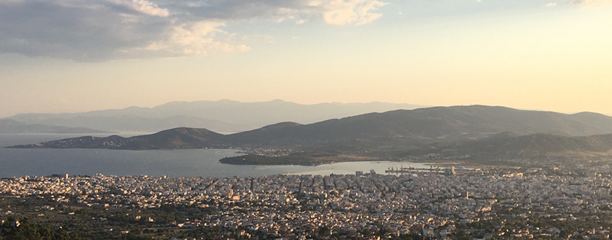Project information
Research project’s title: From the first to the last Mycenaeans in the area of the Gulf of Volos (Thessaly)
Project No: NCN 2020/38/E/HS3/00512
Project financing: Narodowe Centrum Nauki, konkurs SONATA BIS
Keywords: Mycenaean culture, Thessaly, Late Bronze Age, Aegean archaeology
Project lead: Bartłomiej Lis
Project lead, institutional: Institute of Archaeology and Ethnology of the Polish Academy of Sciences
Characteristics
The region of Thessaly, located in the northern part of Central Greece, for a long time has been considered as a periphery of the Late Bronze Age (1650-1050 BC) Greek Mainland, characterized by a culture that is referred to as Mycenaean. However, due to extraordinary discoveries over the last 30 years in its coastal part, in the area of the Gulf of Volos, this view is subject to dramatic change. These discoveries include a previously unknown administrative center at Dimini, otherwise famous for its Neolithic remains, the finding of two Linear B tablets at the site of Kastro Palaia in Volos, the first such written documents to be found north of Boeotia, and an industrial quarter at the site of Pefkakia, beyond the artificial tell that was considered to be the location of also Late Bronze Age settlement. This important research has attracted much of scholarly attention, and coastal Thessaly is now perceived more as a core Mycenaean area rather than a periphery.
This project will investigate how the societies of coastal part of Thessaly became fully Mycenaean, at least in terms of material culture remains accessible to archaeologists. This process was a gradual one, and was a result of both internal processes and external influences. The mechanisms of this change in material culture, so far poorly understood, are the main focus of this project. In order to shed light on them, the analysis will be conducted on multiple levels – starting from individual sites, through regional perspective including the interactions between the main settlements, to the relationships of coastal Thessaly with other regions. The hypothesis proposed here is that in the first stage of the process, the adoption of some elements of Mycenaean culture was the initiative of local elites that competed among themselves for power and prestige. In later times, the direct interest of palatial polities that formed in the south might have played a decisive role.
Two large components will contribute to answering the research questions of the project. One of them is the study of materials deriving from old excavations in the area, the other focuses on the site of Pefkakia and involves fieldwork with three excavation seasons. Material from old excavations includes predominantly pottery and its study will have two main aims – to establish precise relative chronology, necessary to reconstruct the interactions between settlements within coastal Thessaly, and to understand the contacts of Thessaly with other regions thanks to identification of imported pottery. This will be achieved through an application of several scientific analyses, combining non-destructive and destructive methods.
The site of Pefkakia, the focus of the second component, has the largest potential out of the three big sites in the area to reveal new information. Research conducted there so far revealed only a small portion of the site, and it may be that it is the largest one in coastal Thessaly, and not the smallest as believed so far. Another exciting perspective is the location of ancient harbour, since it is assumed that Pefkakia was a major port in the Late Bronze Age. It is clearly shown by numerous finds of large transport containers (stirrup jars, mostly from Crete) and single imports from as far as Near East. Geophysical and geoarchaeological investigation will be carried out to learn as much as possible about the site and its history before excavation starts in the most promising areas of the site. The investigations at Pefkakia will be a collaboration between the Institute of Archaeology and Ethnology, Polish Academy of Sciences, and the Ephorate of Antiquities of Magnesia, under the auspices of the newly established Polish Archaeological Institute at Athens.



